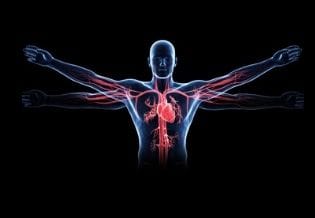Author Contributions
Copyright © 2018 Nasim Habibzadeh
 This is an open-access article distributed under the terms of the Creative Commons Attribution License, which permits unrestricted use, distribution, and reproduction in any medium, provided the original author and source are credited.
This is an open-access article distributed under the terms of the Creative Commons Attribution License, which permits unrestricted use, distribution, and reproduction in any medium, provided the original author and source are credited.
Competing interests
The authors have declared that no competing interests exist.
Citation:
Introduction
The body physiological responses to the exercise paradigms rely on the exercise volume (or pace rate) and exercise duration. During exercise the glycolysis , fat metabolisms and oxygen consumption increase to meet exercise demands that is accompanied with enhanced cardiac and respiratory systems workouts . The body temperature is also dramatically will raise. Depending on the exercise intensity rates ,there are some physical stress on bones and musculature systems 1.
Performing exercises (i.e walking, running ,cycling) in higher level of volume may increase the body stamina and improve the overall fitness. In this relation , several studies showed that vagarious exercises can lead to faster workouts in daily tasks as the body segments and systems depending on the induvial unique capacities can adapt to the different physiological conditions . For example, it has been suggested that executing vigorous exercise is good for disable or elderly populations as it make them to be more active. It is believed that working on higher intensity of their abilities would cause this frail individual to perform more movements over time , although necessary cautions such as the amount of applied exercise intensity are required to take into account at these occasions 2, 3.
Some other evidences recommended that vigorous exercise such as brisk walking can result in some health benefits such as enhancing weight loss, increasing more mechanical stress on muscle and bones to strengthen musculoskeletal system in spite of higher level of muscle soreness 4. Although ,generally not all individual can walk too fast or are able to perform any intensive exercise ,so that performing vagarious exercise cannot be developed to all people as different induvial have non-identical physical abilities in physiologically terms. This is because the tolerated exercise volume (or speed rate) during various mode of exercises is different between induvial .Resultantly ,every person has one unique peak exercise performance capability. Further ,there are some kind of specific people such patients with cardiovascular (CVD) difficulties who are not able to perform exercise in high level of intensities as their health statues can be at more risks at that condition 5. This type of people can manage their health condition with executing moderated kind of exercise modalities (i.e. mild walking at slow pace) to stay healthy with more care. Regular exercise like 10-15 min walking regimen per each day can be beneficial for CVD patients.
More Importantly, the Question Which Can Come Up ,is that what Really are the Side - Effect of Preforming the Vigorous Exercises in Long-Term ?
Some experts assume that the side- effects of vagarious exercise or over - training are pretty serious. Irritably, losing of appetite are primarily negative - effects of vigorous which can lead to the poor or inability to complete the related workouts or task performances .Other adverse clinical outcomes are fatigue, aching muscles and lethargy 6.
The constant vagarious exercise can affect bone frames. Intense exercise loads can increase strain on some particular bones such as back and in part spine areas and can cause risk of disk compression. Strenuous exercise also can increase an abnormal tilt of the pelvis or hip bones which can lead to the hip fractures and thus disabilities in final stage 7. Although choosing the type of exercise in this regards is an important determinant.
However, the people competencies at different exercise domains are vary .Some people hereditary are born to work hard at different aspects and so there are always some exceptions in various areas such those high level elites as they have many different skills and expertise but not all people are the same 8, 9. Therefore, it seems performing moderate type of exercise is better choice for ordinary people since vigorous exercises are not suit for all . The simplest type of moderate exercise is walking which can be performed in any locations without any specific physical or economical costs .
References
- 2.Bruce B, Fries J F, Hubert H. (1985) Regular vigorous physical activity and disability development in healthy overweight and normal-weight seniors: a 13-year study. , Am J Public Health2008 98, 1294-1299.
- 3.McPhee J S, French D P, Jackson D, Nazroo J, Pendleton N et al.Physical activity in older age: perspectives for healthy ageing and frailty. , Biogerontology.2016Jun 17(3), 567-80.
- 4.Garber C E, Blissmer B, Deschenes M R, Franklin B A, Lamonte M J et al.DP; American College of Sports Medicine. American College of Sports Medicine position stand. Quantity and quality of exercise for developing and maintaining cardiorespiratory, musculoskeletal, and neuromotor fitness in apparently healthy adults: guidance for prescribing exercise. Med Sci Sports Exerc2011Jul. 43(7), 1334-59.
- 5.Sharman J E, La Gerche A, Coombes J S.Exercise and cardiovascular risk in patients with hypertension. , Am J Hypertens.2015Feb 28(2), 147-58.
- 6.Oh Deuk-Ja.Hyeon-Ok Hong, Bo-Ae Lee. The effects of strenuous exercises on resting heart rate, blood pressure, and maximal oxygen uptake. , J Exerc Rehabil.2016Feb 12(1), 42-46.
- 7.Scherr J, Braun S, Schuster T, Hartmann C, Moehlenkamp S et al. (2011) 72-h kinetics of high-sensitive troponin T and inflammatory markers after marathon. , Med Sci Sports Exerc 43, 1819-1827.
